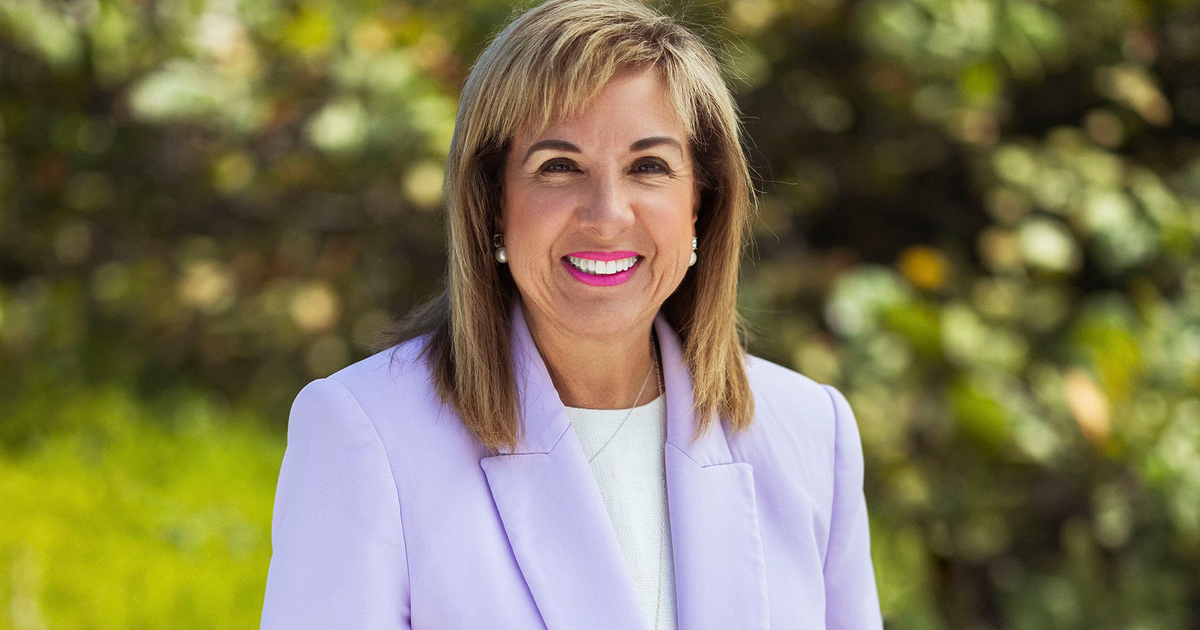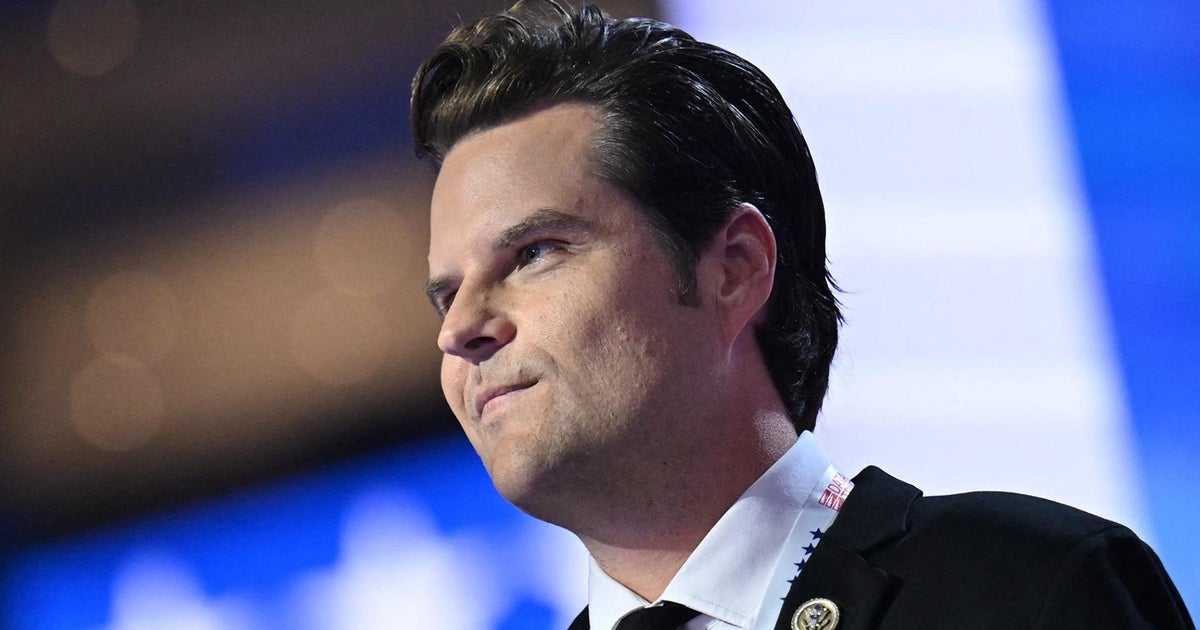Lawmakers Wade Into Amendment 1 Policy, Funding
Follow CBSMIAMI.COM: Facebook | Twitter
TALLAHASSEE (CBSMiami/NSF ) -- With the start of Florida's legislative session looming, one of the first issues to be taken up will be new rules on the state's waters.
But don't expect that all aspects of a voter-approved initiative to conserve water and land will sail smoothly through the 60-day session that begins March 3rd.
As House members and senators hammer out new rules and new funding levels required by the initiative, known as Amendment 1, a wide array of suggestions has poured in from Gov. Rick Scott, Agriculture Commissioner Adam Putnam, environmentalists and business lobbyists.
A House water policy measure (HB 7003) is intended to reverse the degraded state of the state's natural springs, coordinate water management in Central Florida and reduce pollutants that now flow into Lake Okeechobee and later into estuaries to the east and west.
Yet the House proposal doesn't match the details of what the Senate wants. And that is just one of three parts of the Legislature's approach to implementing Amendment 1, a priority of both House Speaker Steve Crisafulli and Senate President Andy Gardiner.
The legislative leaders expressed confidence lawmakers will agree on measures that backers of the amendment will support.
"When we look at water policy, we're really interested in that oversight, and that oversight not just on water policy but Amendment 1 as a whole," said Gardiner, R-Orlando. "We think it's very important that the voters that supported Amendment 1 know that decisions are being based on critical need."
Supporters of Amendment 1 are concerned the efforts will fall short of the improvements needed to the state's waters.
"We have an opportunity with Amendment 1 dollars to do something special for Floridians and that is deliver on their desire to conserve land," said House Minority Leader Mark Pafford, D-West Palm Beach. "We don't have cliffs and mountains, and mountain streams. Everywhere you go in Florida you're basically standing on top of your water supply. That said, we have these dollars available to talk about a comprehensive plan and that's what we need to do. … And I hope we get there."
Environmentalists say state needs have reached a critical juncture as Florida has become the nation's third most-populous state and draws nearly 100 million visitors a year. Also, growth will have to accommodate another 4 million people in the next 15 years
And a worry is that the money voters want for water and land maintenance and preservation will end up going to municipal and county utilities and storm-water projects.
"Last year there was $80 million for non-recurring member water projects," said Janet Bowman of The Nature Conservancy. "That's the kind of stuff that I don't see being funded with Amendment 1 money. It isn't necessarily connected with any restoration strategy. It's just something that's from a local government's capital-improvement plan."
Yet the environmentalists' desires are being countered from the business community.
Associated Industry of Florida's H2O Coalition has called the environmentalist approach to the policy changes "rigid" and said it would "cause water shortages and stifle responsible growth."
THE MONEY
The issue most groups are waiting to see from lawmakers is the eventual breakdown of the money. And that likely will have to wait until deep into the session.
The amendment, backed by 75 percent of voters in November, requires 33 percent of the proceeds from a real-estate tax to go for land and water projects over the next two decades.
Amendment 1 is expected to provide about $757 million for land and water projects in the fiscal year that starts July 1, up from around $470 million in the current budget year.
The Senate has proposed a series of trust-fund bills (SB 576, SB 578, SB 580, SB 582, SB 584, and SB 586) that would designate a single pot within the Department of Environmental Protection to handle the Amendment 1 revenue. The measures also call for shifting about $100 million from transportation funding that typically comes from the real-estate taxes and another $100 million from affordable housing.
A group known as Florida's Land and Water Legacy, which led the amendment drive, has outlined a plan that would send $150 million to the Everglades and South Florida estuaries and another $150 million to the Florida Forever program for land acquisition, springs and trails. Also, $90 million would go for land management, $50 million to springs, $25 million for rural family lands and $20 million for beach management. The rest would cover debt service.
Meanwhile, Scott has offered his own spending plans, some of which are drawing criticism.
While touting a desire to provide funding on a recurring basis for Everglades restoration and springs maintenance, Scott during the upcoming fiscal year wants $150 million for the Everglades, of which $122 million would cover work already underway. He also wants lawmakers to allocate $50 million for springs and $178 million for debt service on bonds tied to the Florida Forever and Save Our Everglades programs. Another $20 million would go for land purchases and restoration of the Kissimmee River.
Scott has drawn criticism, in part, because his plan includes a proposal to provide $17.5 million for wastewater treatment in the Florida Keys, which environmentalists question as an allowed use under Amendment 1. Also, criticism has focused on Scott's proposal to use $156 million to cover operating expenses at state agencies.
WATER POLICY
Absent from Scott's plan, in the eyes of Everglades proponents, is money to purchase U.S. Sugar land to use as reservoir for water sent out of Lake Okeechobee. That would prevent polluted water from going into the St. Lucie and Caloosahatchee estuaries.
The state has an option to buy 46,800 acres at fair-market price by October or any deal would require Florida to pay for an additional 106,200 acres.
Groups such the Everglades Trust have launched what they describe as a "six-figure television, radio and online campaign" that urges Scott and lawmakers to include the U.S. Sugar purchase in any Amendment 1 spending plan.
"This is our last, best chance to protect drinking water, save the Everglades and reduce deadly discharges of pollution from the lake into the St. Lucie and Caloosahatchee Rivers and estuaries --- and time is running out," said Mary Barley, President of The Everglades Trust.
The House and Senate have taken different approaches to water policy.
Rep. Matt Caldwell, a North Fort Myers Republican who is sponsoring the House water-policy proposal, said the measure isn't about establishing individual regional projects.
"This bill broadens the process," Caldwell said. "There are certainly a number of projects I think can qualify in the Amendment 1 language. As we look to cost share --- it's not exclusively a state issue --- it's going to be a county and city and regional authority issue as well."
The Senate version is heavily focused on protecting the state's long-neglected natural springs, which were among Florida's first tourist attractions and now also are used as sources for bottled water.
The House approach, considered more business friendly, in part would impose what are known as "best management practices" for natural springs, the Everglades and Lake Okeechobee. Also, it would direct water-management districts to implement a water-management plan across Central Florida.
Environmentalists had hoped for more.
"They're just plans," Audubon Florida Executive Director Eric Draper, a lobbyist on environmental issues, said of the proposed "best management practices."
"They have a few things that people are required to do, but there is no requirement," Draper added. "And the one for Lake Okeechobee is ineffective."
Unlike in the Senate approach, the House does not include springs-protection zones, which would regulate the impact of septic tanks and the flow of storm water and agricultural runoff into springs.
Sen. David Simmons, among a group of senators that tried last year to advance a springs measure, said any land purchases or use of Amendment 1 money for water treatment and sewers must show the allocation is tied to water-quality improvements.
"At the end of the day, the real test is, are we solving the problems of our environment?" Simmons, R-Altamonte Springs, said.
CONCERNS
As lawmakers try to reach agreement during the session, the key issues will involve water policy, how the increased funding will be used and the creation of a single trust fund to handle the money. Each comes with issues beyond the differences in approaches being taken by the House and Senate and have raised concerns from groups involved in the discussions.
Here are some of the concerns:
--- Future money for affordable housing and transportation could face decreases as trust funds are shifted to meet the environmental funding requirements of Amendment 1.
--- Proposals have been made to use the Amendment 1 money to replace dollars that now go to cover some of the daily operations of state environmental agencies.
--- A desire by South Florida residents and Everglades conservationists to purchase U.S. Sugar land for a reservoir south of Lake Okeechobee isn't currently addressed, and there doesn't appear to be an appetite from legislative leadership for the idea. Nor have lawmakers addressed the Panhandle's Apalachicola Bay, which continues to be enmeshed in a legal battle between Florida, Georgia and Alabama over upstream waters.
--- Little attention so far has been given to the future management of existing state lands.
--- Amendment 1 money could be used for projects that otherwise would be a matter for local governments or communities.
(The News Service of Florida's Jim Turner contributed to this report.)



